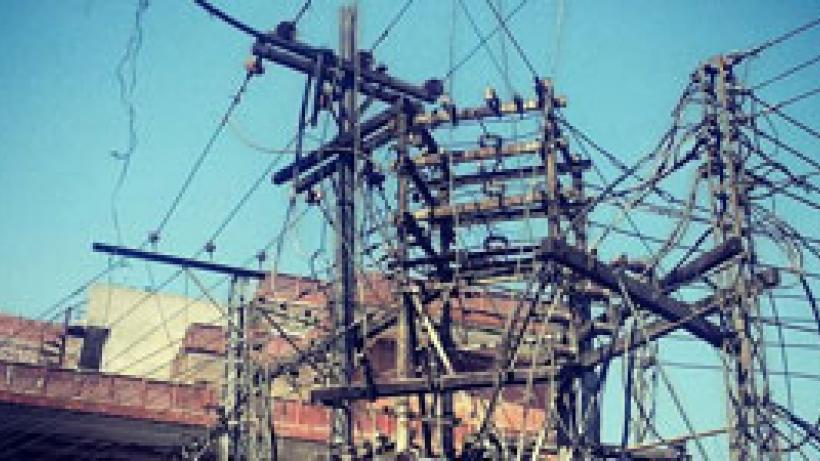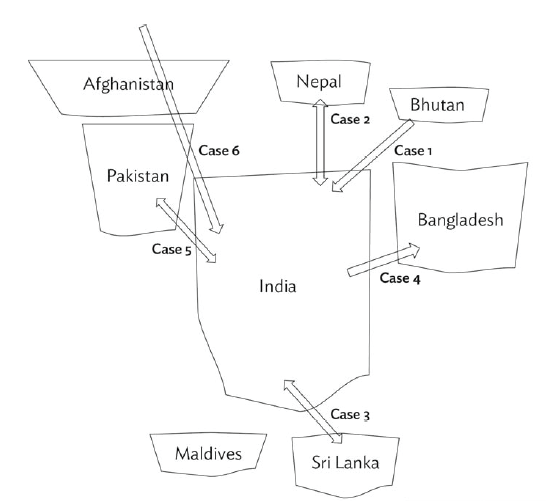
Cheaper, cleaner, more reliable: Why invest in cross-border power-trading
Despite improvements to energy supply over the years, many Indian states still face frequent power shortages. Meanwhile, neighboring Nepal and Bhutan have large reserves of untapped hydro power with the potential to meet unserved demand for energy in major load centres. Investing in interconnections could also contribute to significant reductions in CO2 emissions. Today’s blog quantifies potential gains from an integrated South Asian power.
The benefits of interconnection between any two power systems – be it cross-border or national – is well known. At the simplest level, an interconnection allows cheaper surplus generation from one system to supplant more expensive generation in the other. The two systems require less overall capacity since they can now ‘rely on each other’ supply. Depending on (carbon and other) emissions intensity – interconnections may also reduce overall emissions. Despite the potential, these principles have not yet been widely applied.
A regional power market has however been envisioned by the South Asian Association for Regional Cooperation (SAARC). Nepal and Bhutan have over 100 Giga Watt (GW) of largely untapped hydro power potential and are located very near major load centres in India, Bangladesh and Pakistan that are struggling to keep the lights on.
Following the Regional Energy Trade Study (SRETS) published by SAARC in 2010, the Asian Development Bank (ADB) undertook one of the first rigorous techno-economic analyses to examine the benefits of cross-border power interconnections in South Asia. The study quantifies economic and reliability gains associated with six of the near-term cross-border interconnection candidates including: India, Bangladesh, Nepal, Bhutan, Pakistan, Sri Lanka and Afghanistan/Central Asia. The remainder of this blog outlines the key findings of this cost-benefit analysis.
Nepal and Bhutan have over 100 Giga Watt (GW) of largely untapped hydro power potential and are located very near major load centres in India, Bangladesh and Pakistan that are struggling to keep the lights on.
Benefit to Cost ratios, even for the most expensive interconnections are promisingly high
The (gross) benefits of the six interconnections calculated for 2016/2017 are extremely promising, as illustrated by Figure 1 below.

Figure 1: Cost-Benefit values of Interconnections
Note: Case-2 for India-Nepal considers two scenarios: (a) Nepal builds all planned projects (2000 MW) reaching surplus state; (b) 650 MW of planned capacity addition is delayed, producing a deficit state. Similarly, Case-5 for India-Pakistan also considers two scenarios: (a) Short-term 250 MW transfer at 220 kV; and (b) Medium/long term 400 kV transfer of 500 MW.
Even expensive interconnections such as the one between Sri-Lanka and India, which requires a submarine cable, still produce a benefit to cost ratio of 3.7*. Most of the other interconnections being explored require comparatively lower investments due to shorter distances and the use of overhead transmission lines, as such, their benefit-to-cost ratios are also relatively higher. The India-Bhutan interconnection in particular is expected to deliver 15,000 Giga Watt-hour (GWh) of hydro energy per year (at full capacity) for a relatively low investment of $140-160 million. The cost of which could be recovered in as little as six months based on an estimated $350 million of savings from fuel costs alone!

Figure 2: Cross-border power trading
(Source: ADB, Cross-border power trading in South Asia: A techno-economic rationale, August 2015).
Notes: (i) The arrows indicate the potential flow and direction of power between countries once the interconnection is in operation; (ii) interconnections between India and Bhutan, Nepal and Bangladesh (Cases 1, 2 and 4) are anticipated to be operational in the next 5 years, while interconnections between India and Sri Lanka, Pakistan, and Central Asia (Cases 3,5 and 6) are expected to be longer-term (5-10 years).
Interconnections have the potential to improve the reliability of regional power systems
Although the supply situation in India has vastly improved over the last decade, several of its states continue to face both peak and energy shortages. If we consider the case of the India-Bhutan interconnection, power sharing has the potential to sharply reduce the amount of electricity demand that currently goes unmet (primarily on the Indian side). Valued at $555 per MWh2, another $1.5 billion would be added in annual benefits from approximately 3,000 GWh, or 20% of the electricity transfers that could be used to meet unserved energy demand.
India also faces a shortage of coal and gas; more importantly, there is a yawning gap between demand and supply of these resources which is expected to emerge over the coming years. Interconnections with regional neighbors would form a formidable part of the solution to further improve the Indian power system, particularly with respect to reliability. Importing hydro-power from Bhutan and Nepal would tremendously help India preserve its coal/gas reserves.
Interconnections with regional neighbors would form a formidable part of the solution to further improve the Indian power system, particularly with respect to reliability.
Economic savings potential also exists for power trading among predominantly thermal systems like India - Bangladesh and India- Pakistan. Primary energy resources and power generation capacity and efficiency are much more limited in Bangladesh and Pakistan, which forces these systems to rely significantly on expensive oil-based power generation, or face major power cuts. The India-Bangladesh High Voltage Direct Current (HVDC) link that went live on October 2013 demonstrates this point with over 90 per cent utilisation of the link over the last two years, and an estimated savings of Taka 40 billion per year (or ~$500 million).[1]
Regional power-sharing may contribute to significant reductions in CO2 emissions
In addition to economic gains and improved energy reliability, interconnections would also help reduce carbon dioxide (CO2) emissions. For India in particular, older, less efficient coal plants have an average emission intensity of 1,350 tonne of CO2 per GWh. Looking just at the value of hydropower generation transferred from Bhutan to India, CO2 emissions could be reduced by 10 million tonnes per year by 2016/17, and as much as 40 million tonnes, by 2020/21.[1] The collective fuel cost savings (from all six interconnection cases) is close to $300 million and the corresponding reduction in annual CO2 emissions in India from reduced reliance on coal-based generation would be over 13 million tonnes. The longer term fuel cost savings of importing 40,000 GWh of hydro electricity from Bhutan alone would be 3-4 times as high.
Conclusions
In summary, there are some compelling arguments in favor of establishing regional power-sharing interconnections for South Asia. The growing volume of trade between India and Bhutan and between India and Bangladesh has already started putting the value of these interconnectors on a firmer footing. The set of six near-term interconnection possibilities discussed in this blog represents a small fraction of the interconnection possibilities that exist for the region. It is important that policy makers, planning bodies, system operators, investors and donor agencies collaborate to identify and prioritise further investment opportunities to make the SRETS vision a reality.
[1] R.V. Shahi, Foreign Investment in Bangladesh: Special Session on Power Sector, 29 March 2014.
[2] The expected CO2 reduction in India alone due to Bhutan-India interconnections is expected to be around 0.1% (2016/17) of the emission in 2010 (power sector) and it can grow to 0.4% by 2020/21 (INDIA'S CO2 EMISSIONS PATHWAYS TO 2050, Imperial College and UCL, Jan 2013)

